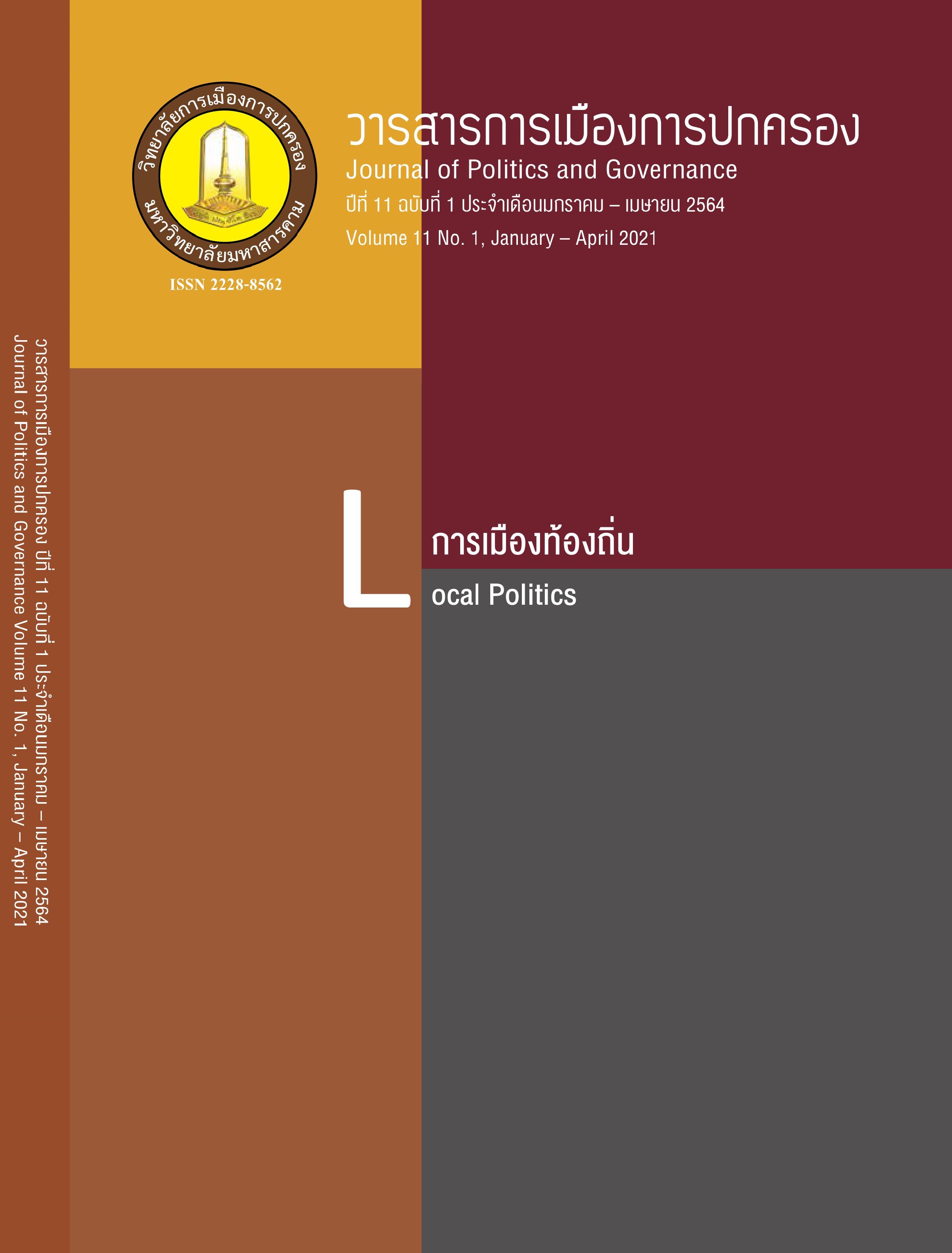Bridging North East India and ASEAN: An Examination of Buddhist Circuit’s Role in the Promotion of Tourism Industry
Main Article Content
Abstract
In this study, the role of India’s Buddhist circuit in reshaping North East India’s tourism industry is explored. Manipur has eight mandalas. The paper found that mandala is a niche tourism product and promotion of mandala tourism is a divergent series of investment and will create forward linkages. There is high likelihood of increasing income and employment opportunities being achieved by North East India. For that, reestablishing and reconnection of ASEAN members with North East India through cross-border economic and cultural integration will be a good policy through coopetition such as exploiting, exploring, bridging, sharing and boundary spanning. It will bring closer economic and cultural ties between ASEAN and India and in the economic development of North East India.
Article Details
References
Bishwanjit S., Loitongbam. (2018). The Potential of Participation in Global Value Chains: Development of North East India. Economic and Political Weekly, 53 (39), 76-82.
Cairns, Grace E. (1962). The Philosophy and Psychology of the Oriental Maṇḍala. Philosophy East and West, 11(4), 219-229.
Census of India. (2011). The Registrar General & Census Commissioner. Government of India.
Donaldson, Thomas Eugene. (1995). Probable Textual Sources for the Buddhist Sculptural Maṇḍalas of Orissa. East and West, 45(1/4), 173-204.
Indian Tourism Statistics. (2015). Ministry of Toursim. Market Research Division, Government of India.
Indian Tourism Statistics. (2018). Ministry of Toursim. Market Research Division, Government of India.
Jian, Haiyun; Pan, Haixiao; Xiong, Guo and Lin, Xiaorong. (2017). The Impacts of Civil Airport layout to Yunnan Local Tourism Industry. Transportation Research Procedia, 25, 77-91.
Jung, C.G. (1968). Psychology and Alchemy, (Collected Works of C.G. Jung, Vol. 12), Translated by Gerhard Adler and F.C. Hull, Princeton: Princeton University Press.
Jung, C.G. (1973). Mandala Symbolism, (From Vol. 9i Collected Works), Translated by F.C. Hull, Bollingen Series, Princeton: Princeton University Press.
Kamei, Gamumei. (2015). History of Manipur: Pre-Colonial Period. New Delhi: Akansha Publishing House.
Manipur Tourism Policy. (2014). Department of Tourism. Government of Manipur.
Meethan. (2008). “Tourism Industry” The International Encyclopedia of Communication (First Edition). Edited by Wolfgang Donsbach, 1-5.
Ministry of Civil Aviation. (2016). National Civil Aviation Policy 2016. Government of India.
______. (2016). Regional Connectivity Scheme - UDAN 2016. Government of India.
Ministry of Tourism, Market Research Division. (2015). Indian Tourism Statistics 2015. Government of India.
______. (2018). Indian Tourism Statistics 2018. Government of India
National Civil Aviation Policy (NCAP). (2016). Ministry of Civil Aviation. Government of India.
Nolan, M.L. and Nolan, Sidney. (1992). Religious Sites as Tourism Attractions in Europe. Annals of Tourism Research, 19, 68-78.
North Eastern Region (NER). (2020). Ministry of DONOR 2011. Government of India.
Raj, Razaq. (2012). Religious Tourist's Motivation for Visiting Religious Sites. International Journal of Tourism Policy, 4(2), 95-105.
Sanajaoba, Naorem. (1994). Manipur Past and Present: Volume IV, New Delhi: Mittal Publications.
Sharma, A.K. (1994). Manipur: The Glorious Past. New Delhi: Aryan Books International.
Somorjit, Wangam. (2018). World’s Largest Mandalas from Manipur and Carl Jung’s Archetype of the Self. NE Scholar Magazine, 4(1), 24-33.
______. (2019). merging the Lost Civilization of the Manipur Valley. NE Scholar Magazine, 4(4), 30-39.
Strategic Initiatives & Government Advisory (SIGA) Team. (2012). Diverse Beliefs. Tourism of Faith Religious Tourism Gains Ground: YES Bank.


